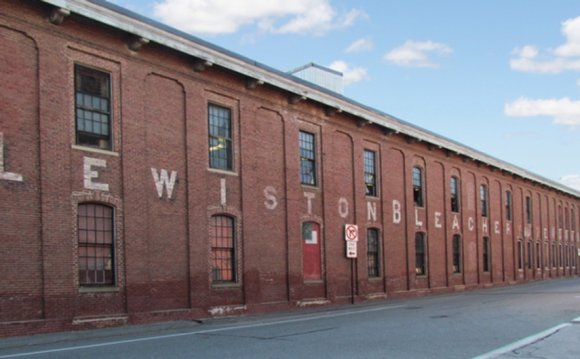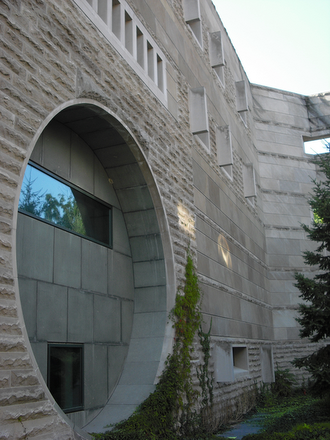
As of January 2, 2014, UWM's Historic Resource Management Services program (UWM-HRMS) has expanded to include key personnel and expertise from Great Lakes Archaeological Research Center, Inc. (GLARC). The new program will be known as University of Wisconsin-Milwaukee Cultural Resource Management (UWM-CRM). Existing GLARC and HRMS project commitments will be jointly completed by GLARC and UWM-CRM staff. This will allow seamless continuation of existing project initiatives. Current GLARC and HRMS clients will continue to work with familiar project managers and should experience no difference in service. All contracts initiated after January 2, 2014 will be administered by UWM-CRM.
UWM's CRM program was established in 1974 and has been managed as a contractual arm of the Department of Anthropology ever since. GLARC was incorporated in Milwaukee in 1976 and quickly established a reputation for high quality, cost-effective CRM work. The new UWM-CRM program has been designed to provide clients with the same elevated level of service clients have come to expect from both programs. However, the UWM-CRM program will be able to offer clients a "one-stop shop" consulting service enabling clients to comply with historic preservation regulations relating to both archaeological sites and architectural-historical resources.
UWM-CRM also provides a broad spectrum of interpretive services from exhibition master planning to the design, fabrication, and installation of traveling and/or temporary exhibitions including the development of accompanying curriculum materials, social media plans and digital products such as supporting web sites.
Facilities
The UWM-CRM program will continue to be housed in the UWM Archaeological Research Laboratory (ARL) on UWM's Milwaukee campus in Sabin Hall. The ARL provides space for UWM-CRM offices, materials processing, sample preparation and analysis, and secure curation of archaeological materials. In addition, the ARL maintains a wide variety of field and laboratory equipment including vehicles, essential excavation gear, and computing facilities. Specialized facilities include GIS workstations, darkroom, soils lab, comparative faunal and floral collections, and compositional analysis lab equipped with polarizing stereomicroscopes, and an X-ray Fluorescence Analyzer.
The facilities of the Archaeological Research Laboratory are extensive and are designed to facilitate an integrated approach to archaeological, historical, and architectural-historical investigations. The ARL encompasses 10, 000 square feet of space devoted to offices, artifact processing areas, special collections space, microcomputer and main frame computer facilities, photographic and cartographic studios, and storage. The Laboratory owns all the necessary equipment for conducting archaeological and historical field and laboratory investigations including vehicles, total stations, GPS, digital SLR cameras, sifting screens, excavation tools, scales, and microscopes.
ARL special collections include topographic maps, a comparative faunal collection, microfilms of the original land survey records for Wisconsin and Illinois, and artifacts and records from our previous research. The ARL also provides access to the Wisconsin Historic Preservation Database (WHPD), the official online registry of archaeological and historical properties in Wisconsin. As a university program, UWM-CRM has access to the UW System Libraries and other research facilities, fleet vehicles, duplicating services, federally approved accounting services, computing consultants, and the State of Wisconsin liability and worker's compensation programs.
Sabin Hall also houses an "Exhibition Lab" adjacent to the ARL. It maintains a wide variety of equipment for the design and fabrication of interpretive exhibitions including: large scale printing and dry mounting, mat cutting and framing, digital photography, vinyl cutting, plexiglass cutting/bending and wire bending/soldering for the construction of artifact mounts, and computers and professional design software.
Curation
Archaeological materials held by Archaeological Research Laboratory are curated in a 2, 400 square foot, dedicated curation facility. The curation facility is compliant with federal regulations as outlined in Standards and Guidelines for Curation of Federally-owned and Administered Archeological Collections (36 CFR 79). Items acquired through sponsored research by UWM personnel are curated at no additional charge. Curation of materials generated by non-UWM researchers is accomplished through extramural contracts administered by UWM-CRM.
RELATED VIDEO




 Human resource management (HRM, or simply HR) is the management of an organization's workforce, or human resources. It is responsible for the attraction, selection, training, assessment, and rewarding of employees, while also overseeing organizational leadership and...
Human resource management (HRM, or simply HR) is the management of an organization's workforce, or human resources. It is responsible for the attraction, selection, training, assessment, and rewarding of employees, while also overseeing organizational leadership and...








